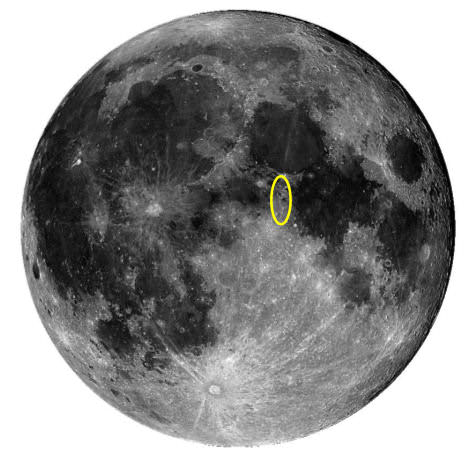[/caption]
The X-ray instrument on board the Chandrayaan-1 spacecraft orbiting the moon was switched on and successfully detected its first X-ray signature from the moon. The C1XS X-ray camera, (pronounced like "kicks") detected the X-ray signal from a region near the Apollo landing sites on December 12th 2008 at 02:36 UT. The solar flare that caused the X-ray fluorescence was exceedingly weak, approximately 20 times smaller than the minimum C1XS was designed to detect, which is good news for the sensitivity of the instrument. "C1XS has exceeded expectations as to its sensitivity and has proven by its performance that it is the most sensitive X-ray spectrometer of its kind in history," said Ms. Shyama Narendranath, Instrument Operations Scientist at the Indian Space Research Organisation (ISRO).
The instrument will help map out the composition of the Moon in much greater detail than has ever been done, and could help settle a long-running debate about how the Moon formed.
The leading theory of how the Moon was created is that a Mars-sized object slammed into the Earth early in its history, creating our orbiting moon. A better accounting of the Moon's makeup is needed to solidify the theory.
A few other spacecraft, like Chandra have taken X-ray images of the moon, but X-ray imaging from Earth is impossible because our atmosphere cuts out X-rays from space.
The C1XS will work by looking at the X-rays from our sun that have been absorbed by atoms in the lunar soil, then re-emitted in such a way as to reveal the chemistry of the surface. The spectrometer is sensitive to magnesium, aluminium and silicon x-rays. [caption id="attachment_24064" align="aligncenter" width="580" caption="The red curve shows the combined signal from all 24 C1XS X-ray detectors during the solar flare at 02:35-02:38 UT on Dec. 12th. The black dashed line shows the normal background signal detected by C1XS. The three "fingers" sticking up between 1 and 2 keV are due to the presence of the elements magnesium, aluminium and silicon (left to right) on the Moon. Credit: STFC"]
[/caption] The X-ray camera collected 3 minutes of data from the Moon just as the flare started and the camera finished its observation. The signal reveals the X-ray fingerprint of a part of the lunar surface. As the mission continues, C1XS will build up a detailed picture of the ingredients that have gone into the Moon.
Barry Kellett, instrument scientist from the UK's Science and Technologies Facilities Council said, "Despite the small quantity of data, our initial analysis and modeling shows that C1XS has identified the chemistry of this area of the Moon." [caption id="attachment_24065" align="aligncenter" width="250" caption="The C1XS instrument. Credit: STFC"]
[/caption] The instrument was jointly developed by the UK's STFC Rutherford Appleton Laboratory and ISRO. Professor Richard Holdaway, Director of STFC's Space Science and Technology Department, said, "We are thrilled that C1XS has started its mission so successfully and is exceeding expectations. This sophisticated instrument will not only help us better understand the origin of the Earth-Moon system but will ensure that the UK plays an important role in this international activity."
Source: STFC
 Universe Today
Universe Today
